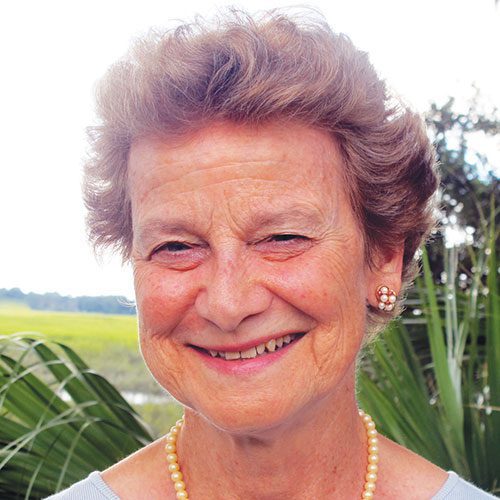In 2006 American author Elizabeth Gilbert achieved a pinnacle of literary success most writers only dream of with the publication of Eat Pray Love. Her memoir has sold more than 12 million copies to date, hogged a spot on the New York Times Best Seller List forever and a day, and spawned a $204.6-million-grossing movie starring Julia Roberts. Whether you’re a writer or embrace a creative endeavor of any sort, you’ll likely understand the following question: How in the world do you follow that way-up-in-the-clouds level of achievement? How do you ever sit down to a blank page and begin again?
If Gilbert had been a one-trick pony, she’d have rested on her laurels and lived the remainder of her life in a hammock somewhere gorgeous eating bonbons. But this award-winning writer is still living life in hefty, courageous chunks and has continued to write about her experiences via memoirs, while cranking out essays, short stories, novels, and pure gems of nonfiction. Put simply, she’s the real deal, a human being who embraces what she’s on the earth to do. And in so doing, has become a shining example for creative people in pursuit of realizing their dreams, no matter their chosen direction. Happily for the rest of us, she’s committed to explaining the process as it applies to her and how it works in her life.
Turns out much of what she says rings true across the creative board for many of us.
Using Gilbert’s love of creativity as a springboard, let’s take a gander at the process itself, and how we as humans can discover, embrace, and bring forth our own inner talents, visions, and individual genius. Don’t let that last word suck you into vehement denial. This definition might be easier to acknowledge: Genius itsownself is “merely” notable creative or intellectual power or other natural ability in a field of knowledge.
Just because you can’t draw a straight line with a ruler, can’t make a trumpet wail like Wynton Marsalis, or can’t paint a masterpiece like Marc Chagall, you may not consider yourself creative. But you can be innovative. All it takes is looking inside, identifying your own special talents and skills, and choosing to focus on and develop those gifts as such. For they are indeed fortes that may sometimes be hidden deep in the psyche, treasures that must be unearthed like the rare archaeological…er…psychological finds they are. Gilbert refers to these as “your capacities, your aspirations, your longings, your secret talents.” When you discover these, acknowledge them, and incorporate them in your day-to-days, this, she says, is “creative living.”
Any life that’s driven more by curiosity than by fear is considered a creative one, whether it encompasses the arts, business, IT, math, politics, human connections, sports, et al. Set aside for a moment the concept of the fine arts as the only acceptable creative path.
What about someone who is a talented CEO of a successful company? Take Ben and Jerry’s, for instance. Did you know that Ben suffered from severe anosmia, i.e. a lack of sense of smell, and relied more on the heightened sense of feel in his mouth? That’s the reason for all those tasty chunks in the company’s luscious creations – think Cherry Garcia! – while Jerry learned ice cream making through a correspondence course. Their journey involved pure creativity from square one. For the complete story, read Ben and Jerry’s: The Inside Scoop, about how Ben Cohen and Jerry Greenfield built a wildly successful business “with a social conscience and a sense of humor.” You’ll discover that every time these entrepreneurs ran into a wall, creativity led them around it.
Though I and much of the rest of the world were fascinated by the great Muhammed Ali, I was never truly a boxing fan until I watched Sugar Ray Leonard fight his way to the gold medal in the 1976 Olympic Games. Concentration was etched in his face. It was obvious how deep inside he dug to extricate his raw talent and creativity. No question he trained hard and was exceptionally physically fit, but his brain was engaged as well as his muscle power. In 2016 The Ring magazine voted Leonard the greatest living fighter.
Winner of the Nobel Peace Prize, President Jimmy Carter creatively employed his exceptional negotiation and human rights skills before, during, and after his term in the country’s highest office.
On a more human scale, creativity can manifest in a talent for rebuilding a 1963 Corvette Grand Sport, teaching atomic theory to a junior high class, decorating a condo, baking a sweet galette de rois, smashing an untouchable serve in tennis, winning a fly-fishing tussle with a hefty Rainbow trout, operating a backhoe well, honing “great mom or dad” skills, home-brewing a tasty IPA, or planning a dream, month-long trip-of-a-lifetime to learn espanol in Ronda, Spain, the birthplace of bullfighting.
You get the idea. Gilbert’s definition of creativity, with which she begins her remarkable primer, Big Magic: Creative Living Beyond Fear, is “The relationship between a human being and the mysteries of inspiration.” Period. Creativity can manifest in any field that you choose.
Here’s the thing: Embracing creativity can trigger fear, especially if you’re creating outside the box most folks consider “normal.” This will happen, says Gilbert, “because creativity asks you to enter into realms of uncertain outcome, and fear hates uncertain outcome.” She equates this sort of fear to “a mall cop who thinks he’s a Navy SEAL: He hasn’t slept in days, he’s all hopped up on Red Bull, and he’s liable to shoot at his own shadow in an absurd effort to keep everyone ‘safe’.” If you want creativity in your life – and living to your largest capacities includes using creativity as a starter – expect fear in any of its myriad forms to accompany you on your journey, at least from time to time. Eschew self-criticism, perfectionism, fear of failure, and all its egotistic cousins that can make you feel as if you’re in control when in actuality you’re avoiding growth and fulfillment.
Do you have the courage to overcome fear, to access the treasures that are hidden within you and bring them into the world?
Before you answer, be inspired by Gilbert’s wisdom: “And you have treasures hidden within you – extraordinary treasures – and so do I, and so does everyone around us. And bringing those treasures to light takes work and faith and focus and courage and hours of devotion, and the clock is ticking, and the world is spinning, and we simply do not have time anymore to think…small.”
Embrace a child’s sense of wonder about what’s within your heart and let your treasures shine forth.









